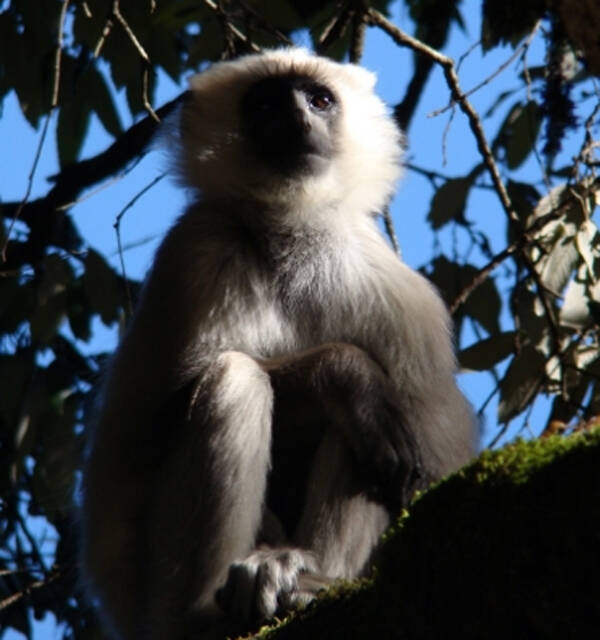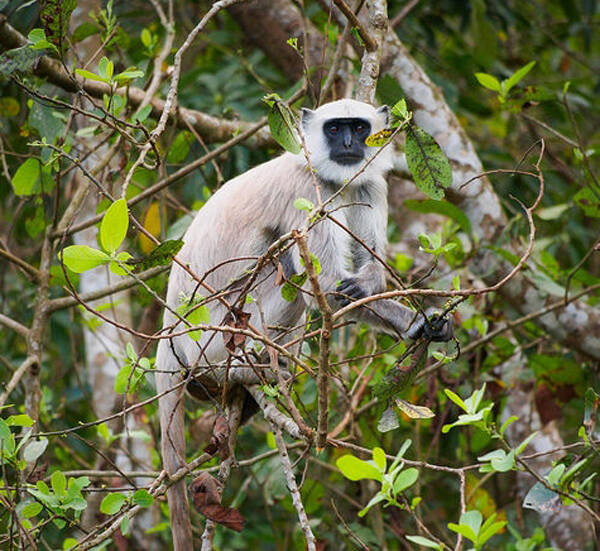Semnopithecus hector
IUCN
LCBasic Information
Scientific classification
- name:Semnopithecus hector
- Scientific Name:Semnopithecus hector,Tarai Gray Langur,Talai gray langur, Tarai gray langur, lesser mountain langur, gray langur
- Outline:Primates
- Family:Cercopithecidae G.Langur
Vital signs
- length:58.5-64cm
- Weight:9.9-13kg
- lifetime:About 20 years
Feature
Distribution and Habitat
Distributed in Bhutan, India and Nepal.
Appearance
Hector's gray langur is a subspecies of the Indian gray langur. It is about 58.5-64 cm long, weighs 9.9-13 kg, has a tail that is more than 100 cm long, and has well-developed cheek hair and eyebrows. It is named after its body length or tail length. The body hair is mainly brown and gray, with red on the back and white fur on the ventral side. There are some gray-white hairs on the forehead that radiate in a spiral shape. The feet, hands, face and ears are black, and there is a circle of white hair on the cheeks. There is a crown on the top of the head. The eyebrows grow forward and are also very long. There are white hairs on the head, face, chin and throat, and it looks quite handsome. The skin is pale at birth, but it turns black before three months; the hair color is also different from that of adults, which is brown-black, and becomes light gray when it is two to five months old, and then gradually turns into yellow-brown, and only turns into gray-yellow-brown when it is adu
Details
Hector's Gray Langur (scientific name: Semnopithecus hector), also known as Tarai Gray Langur, is a subspecies of the Indian Gray Langur.

Hector's gray leaf monkeys usually like to form small groups of more than ten and spend 5 hours a day grooming each other. The call is relatively low, and often makes a "woop" sound, which is not only a signal for communication between members, but also serves as a warning to other neighboring populations that they occupy territory. Whether running on the ground or jumping on branches, it always bends its long tail high up, which makes it look very impressive. It has a high jumping ability, often jumping more than 8 meters, and can easily jump from a 12-meter-high tree to the ground.
Hector's gray leaf monkeys often appear on the cliffs in the forests on both sides of the river valley. They like open places and often gather in small groups. Each monkey group occupies an activity range, and each group has its own central area of activity, including sleeping trees, favorite trees and water sources. Some monkey groups are all male monkeys, and some are both male and female groups. If a single male monkey breaks into a group of both sexes, the head monkey of the group will immediately attack and drive away the intruder. In the group of both sexes, the male monkey who serves as the head monkey is often replaced. These male monkeys act as if they are superior, bully the weak, and act tyrannically. However, the younger monkeys are treated better and are spared from being beaten or bullied.

Hector's gray leaf monkeys forage mostly in the morning and evening, mainly eating various leaves and buds, accounting for about 54% of the total food, flowers accounting for about 5% of the food, and fruits accounting for about 37%. Hector's gray leaf monkeys in different places can go without water for several months in the dry season, because in addition to taking water from plants, they can also drink their own urine to quench their thirst. Hector's gray langur likes to eat all kinds of fruits, leaves, buds, flowers, etc. Usually it comes out to forage after the sun rises, takes a long rest at noon, moves and eats again in the afternoon, and returns to the tree to sleep in the evening.
Listed in the 2008 Red List of Endangered Species of the World Conservation Union (IUCN) ver 3.1-Near Threatened (NT).
Protect wild animals and eliminate game.
Maintaining ecological balance is everyone's responsibility!








